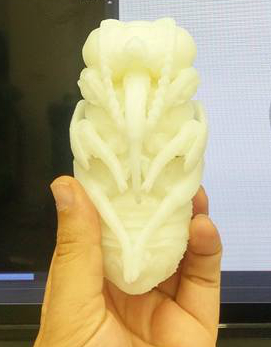About This Project
Alfalfa leafcutter bees (ALBs) are important crop pollinators that nest in aboveground cavities (e.g. straws). Much of the biology of these bees can be understood by studying their nest architecture. On farms, these bees are exposed to pesticides which can impair their ability to build nests and reproduce. We will examine how exposure to prevalent insecticides, neonicotinoids, affects ALB nesting behaviors by studying nest structure and size under different insecticide treatments.
Ask the Scientists
Join The DiscussionWhat is the context of this research?
The alfalfa leafcutter bee (ALB) is a solitary bee that builds complex nests for their offspring. Each nest consists of sequential cells made from leaf clippings, and provisioned with pollen and nectar, where a single egg is deposited. Given the central importance of nesting behaviors for bee reproductive success, understanding how environmental stressors change nest building is critical for managing this pollinator. One potential stressor is pesticides used in alfalfa, which adult ALBs encounter while foraging for pollen and nectar. Sublethal doses of these pesticides can disrupt bee behaviors but their effects on nest building such as the number of cells per nest, the size of the nest cap, or offspring sex ratio remain unknown.
What is the significance of this project?
The alfalfa leafcutter bee (ALB) is the second most valuable pollinator in the world after the honey bee. Our preliminary results show that ALB nest building behaviors vary considerably among females and affect offspring body size, sex ratio, and protection from parasites and pathogens. Stressors that impair nest building, such as pesticides, could thus influence bee abundance and health, and in turn affect crop pollination. Many studies have focused on the lethal effects of pesticides, or sublethal effects on bee navigation and foraging, but effects on nest building behaviors are unknown. Further, understanding how nest architecture varies among females and affects bee fitness contributes to our understanding of this pollinator's natural history.
What are the goals of the project?
Our goal for this project is to test whether exposure to neonicotinoid insecticides alters nest building in alfalfa leafcutter bees (ALBs). We will set 9 screened enclosures in an alfalfa field and expose ALBs to 3 different treatments: no insecticide exposure, exposure to a low (sublethal) insecticide dose, and exposure to a high (lethal) insecticide dose. We will compare the following nest components across insecticide treatments including: nest protection (the number and weight of leaves used to build the nest cap), nest size (the length and number of cells per nest) and investment per cell (mass of the food provision per cell, number of leaves per cell, and offspring size and sex per cell).
Budget
*Funds for an undergraduate assistant will be matched by an external funding source (total = $4800) if funding goals are met. This will pay a full time undergraduate research assistant during the summer of 2017 ($12.00/hr, 40hrs/wk for 10 weeks). This student will assist with lab work, collect and measure bee nests, maintain a blog about his/her research experiences and information on neonicotinoids, solitary bees, and bee behavior. The selected student will also participate in a professional development program called "Pollination Nation" that prepares students for careers in science.
Alfalfa leafcutter bees are commercially available and will be purchased with these funds. Bees will be dosed with a purchased neonicotinoid pesticide. Effects of neonicotinoid exposure on adult bees will be assessed in part with an acetylcholine/acetylcholinesterase assay using these funds. Field materials (cages, nests, etc.) will be supplied by research team.
Endorsed by
Meet the Team
Team Bio
We are a group of postdocs that work together within a larger pollinator research unit based at North Dakota State University in Fargo, ND. We each contribute complementary specialties that strengthen our project and ensure its success, integrating physiology (Helm), behavior and pesticide toxicology (Royauté), and ecology (Mallinger).
Bryan Helm
I am a postdoctoral research associate in the Department of Biological Sciences at North Dakota State University. My research addresses questions about the developmental physiology of insects, focusing on the causes and consequences of metamorphosis. My prior work examined larval physiology and causes of metamorphic induction in the tobacco hornworm, Manduca sexta, a well-studied laboratory model. More recently, I have studied metamorphosis in bees (Megachile rotundata, Osmia lignaria, and Apis mellifera) and have expanded my investigation of underlying physiology to encompass the entire transition from larva to adult insect. This work broadly aims to draw mechanistically-explicit links between developmental variation/stress during metamorphosis and phenotypic consequences for adult insects, especially pollinators.
Raphaël Royauté
I am a behavioral ecologist and postdoctoral researcher in the Department of Biological Sciences at North Dakota State University. I am interested in the behavioral mechanisms that allow animals to cope with environmental changes resulting from human activities. My research aims at understanding how environmental factors such as pesticides, diet and the developmental environment affect individual variation in behavior. I use a variety of arthropod species to answer these questions, including spiders, crickets and solitary bees.
Rachel Mallinger
I am an entomologist and pollination ecologist currently doing a post-doc in Fargo ND. I received my PhD from the University of Wisconsin-Madison where I studied how landscape structure and habit management affected populations of wild bees within apple orchards. My work utilizes approaches from landscape ecology, community ecology, and conservation biology to understand the factors that shape pollinator communities with consequences for plant-pollinator interactions and pollination rates. I am passionate about applying my science to agricultural management and to insect conservation.
Additional Information
We are grateful for any and all support for this project. As a thank you to our donors, we will offer the following gifts if our project is funded:
All backers will be acknowledged in posters, presentations, and publications (hyperlink to backers provided)
Backers who pledge $15 - $49 will receive a hand-written postcard, thanking them for their support. This postcard will feature original photography from the project.
Backers who pledge $50 - $74 will receive a unique 11"x17" poster featuring micro-CT images of the alfalfa leafcutter bee life cycle. (40/40 available)

Backers who pledge $75 - $100 will receive 10 alfalfa leafcutter bee nests containing overwintering prepupa. These nests can be dissected (for educational or outreach purposes) or released the following spring so that you can have some of these pollinators in your backyard. (30/30 available)

Backers who pledge more than $100 will receive an enlarged (5x) 3d print of a pupal or prepupal alfalfa leafcutter bee. (20/20 available)
Project Backers
- 32Backers
- 116%Funded
- $3,717Total Donations
- $112.64Average Donation




